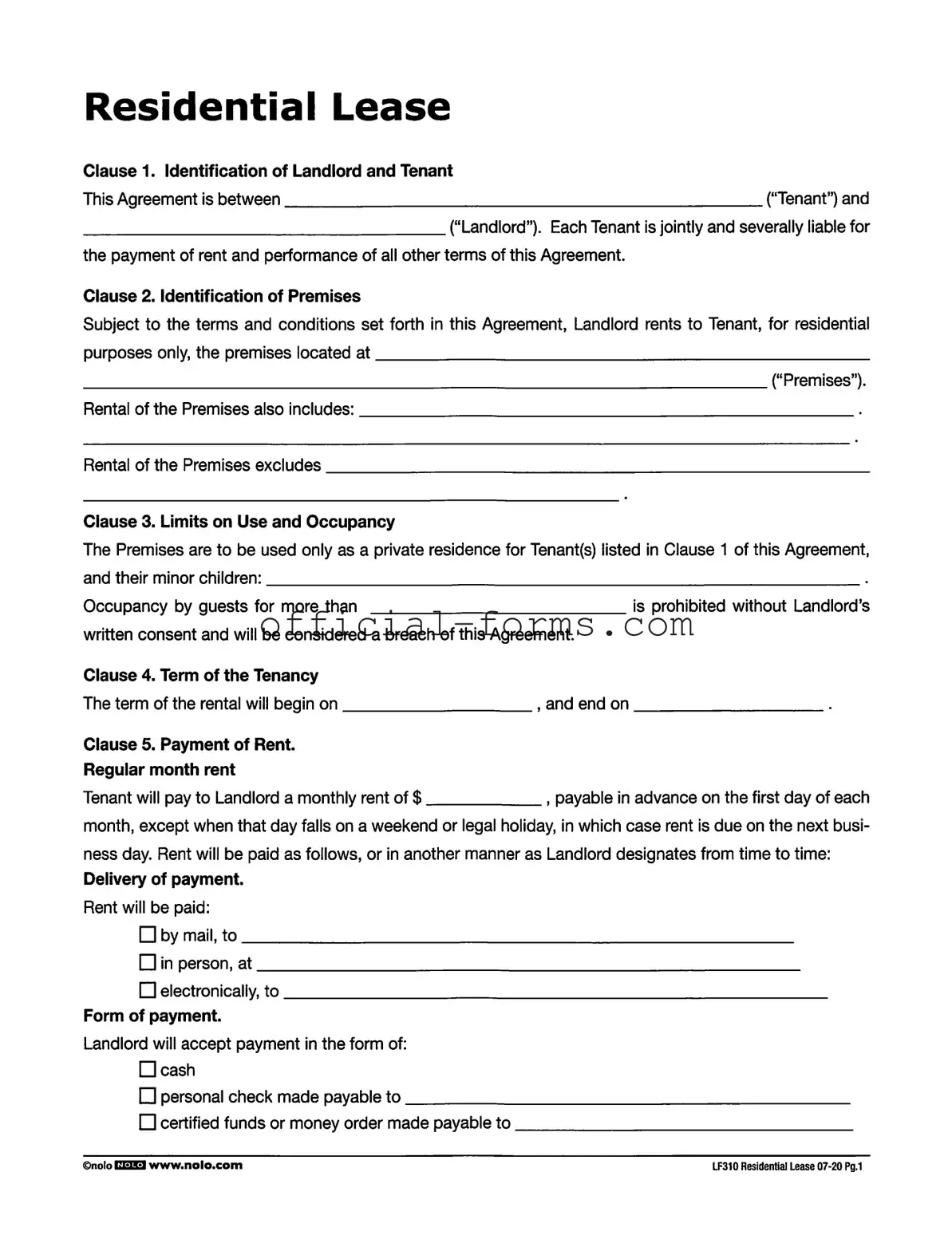The LF310 Residential Lease form is a comprehensive document designed to outline the terms and conditions between a landlord and tenant for a residential rental agreement. It begins by identifying the parties involved, ensuring that both the landlord and tenant understand their roles and responsibilities. The form specifies the premises being rented, emphasizing that the property is intended solely for residential use by the listed tenants and their minor children. It includes important clauses regarding the duration of the tenancy, payment details, and the consequences of late payments. Rent is due monthly, with clear instructions on how and where it should be paid. Additionally, it addresses security deposits, outlining the amount required and the conditions under which it may be withheld. The form also details utility responsibilities, indicating which charges the tenant must cover and which will be handled by the landlord. Lastly, it prohibits subletting or assigning the lease without prior written consent, ensuring that the landlord maintains control over who occupies the premises. Overall, the LF310 Residential Lease form serves as a vital tool for establishing clear expectations and protecting the rights of both parties in a rental agreement.
